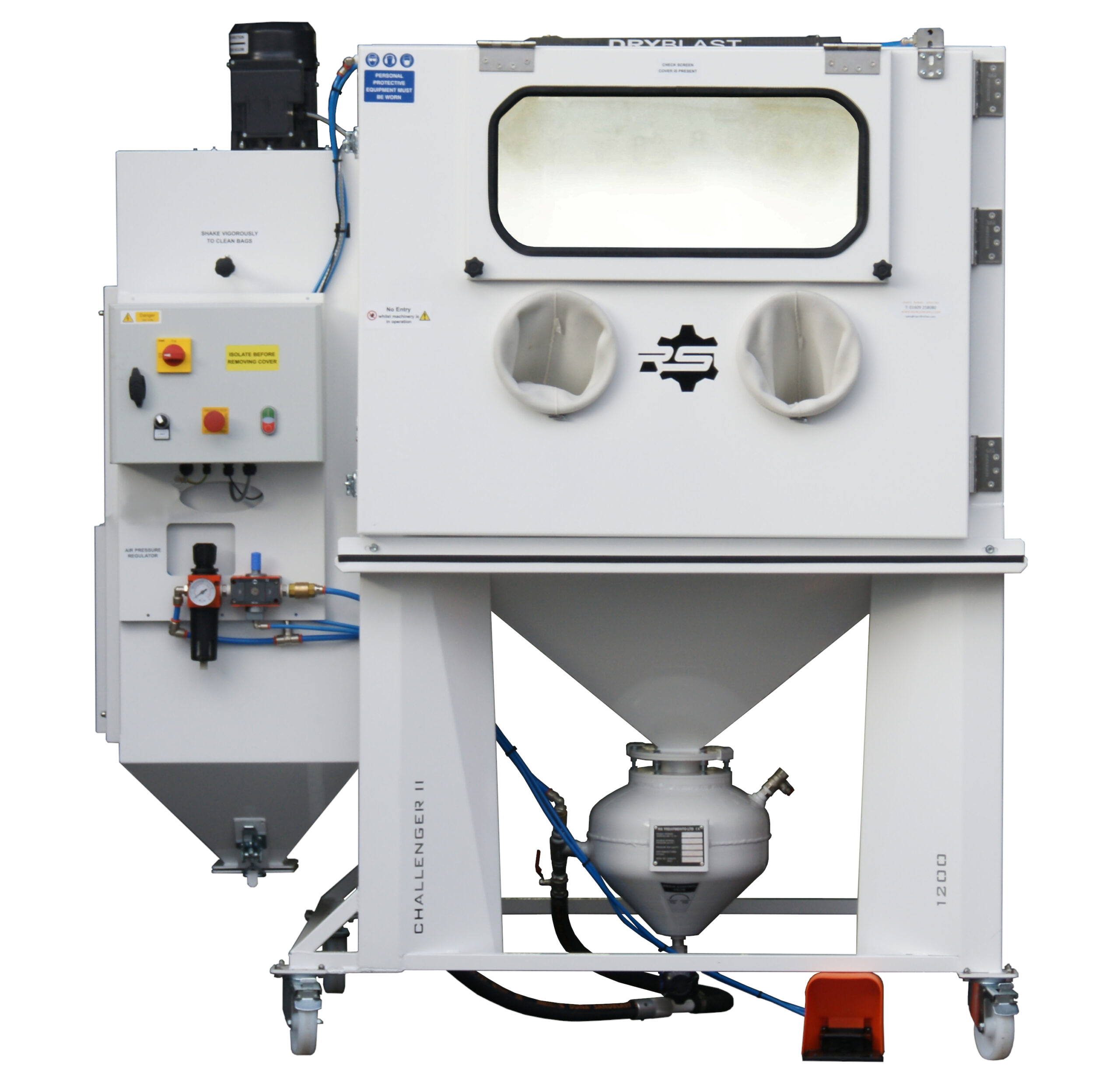
CHOOSE A SIDE TO LEARN MORE
DRY BLAST CABINETS
WET BLAST MACHINES
The dry blasting process originates from the use of sand propelled by pressurised air to create an abrasive process known as sand blasting. This terminology is still used today although the use of sand has virtually disappeared. Sand has been replaced by a wide range of safer and more effective materials known generally as blast media.
The requirement for blast treatments has grown dramatically in all sorts of industries. RS PRO FINISHES has developed a comprehensive range of blasting equipment and offers blasting media to satisfy a wide range of applications.
The requirement for blast treatments has grown dramatically in all sorts of industries. RS PRO FINISHES has developed a comprehensive range of blasting equipment and offers blasting media to satisfy a wide range of applications.
There are two main categories of the blasting process:
1- Preparation
The preparation of surfaces prior to another operation. A smooth surface may be required to be etched prior to a coating being applied to ensure that the coating adheres more efficiently.
2 – Finishing
A final cosmetic operation prior to a product being packaged and despatched. A product can be transformed from a dull to a shinier look giving a more professional finish.
The RS Wet Blast machines are designed to be used in a variety of applications. The principle of wet blasting is similar to dry blasting with the use of an abrasive media and compressed air. However, unlike the dry blast process, wet blasting uses a third element, liquid (water). Using water, enhances the level of finish, as well as having other advantages, degreasing capabilities, no dust production, and giving a smoother, more consistent finish. By lubricating the abrasive particles in a stream of water produces a uniformed flow across the surface, this giving the advantage of less risk of damage being caused to the work piece, and any abrasive action is consistent across the whole of the surface. The water and media mixture are stored within the cabinet’s sump, delivery to the blast nozzle is via a glandless polyurethane pump, which is submerged in the sump of the cabinet and externally driven by an electric motor. Compressed air is introduced to the media mix at the gun, this accelerates the mixture to provide an effective blast.
If you have any enquiries about our Dry Blast Cabinets, Please Call 01609 258080 or Contact Us











